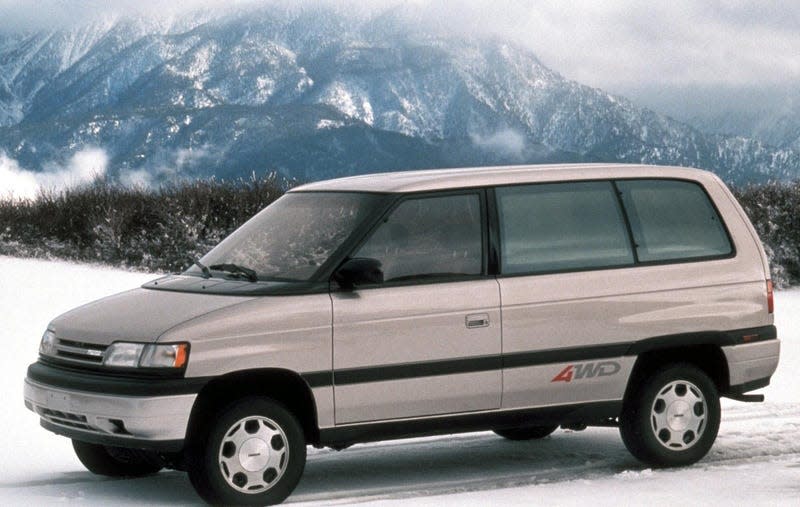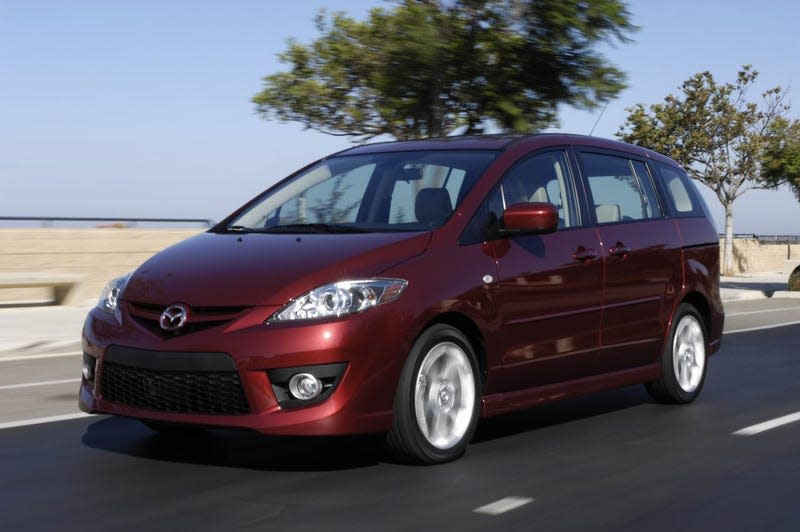Here Are Some Minivans You Probably Forgot About

Minivans used to be big chunk of the U.S. vehicle fleet. Today, there are just four minivan models from four manufacturers: Toyota, Kia, Honda and Chrysler.
Let’s take a look back at few of these people movers you probably forgot about.
Read more
Switch 2 Could Look Like One Of Nintendo's Classic Handhelds
2023 Is The Best Year For Games In A While (And Maybe Ever?)
Dodge teased performance vans over the years resulting in two concepts a decade apart. The first Caravan R/T Concept was based on the third generation Caravan and was shown in 1999. It was powered by a V6 making 325 horsepower and looked the part with decals and spoilers. The second Caravan R/T concept was a mysterious one shown at the 2009 Detroit Auto Show. No info was given about it but it had a hood scoop, dual exhausts and SRT looking 20-inch wheels.
The production version of the Caravan R/T was much less exciting. Debuting for 2011, it was one of the first Chrysler models to be powered by the then new 3.6-liter “Pentastar” V6 with 283 hp. It also received a 12 mm lower ride height, rear spoiler, body color grille and 17-inch wheels.
Eagle Summit

More of a small MPV, the Eagle Summit was one of the models developed under the Chrysler/Mitsubishi partnership that was Diamond Star Motors. It was also badge engineered as the Mitsubishi Colt and Plymouth Colt Vista.
The Summit was introduced in 1992 and could be had with all wheel drive. It was presented to consumers as the best of both worlds: the maneuverability of a compact car with the high seating position, cargo flexibility and sliding side door of a minivan. It lasted until 1996, two years before the Eagle division itself was folded.
Ford Windstar

You’re probably wondering why the Windstar is on this list. It wasn’t rare and it was sold for years. It’s on this list though because of a unique feature many probably forgot it had.
Ford was in panic mode when Chrysler released all new versions of its top selling Caravan/Town & Country/Voyager in 1996. Chrysler blindsided the market by offering a feature not seen before: dual sliding doors. This threw Ford off as the company had just released the new Windstar a year prior with just a single sliding door. Not being able to go back and and add a second sliding door, Ford made the driver side door on the Windstar six inches longer for 1998. It was also designed to open wider while the drivers seat gained the ability to tilt forward and slide. They called this the Family Entry System. A year later an all new Windstar debuted with dual sliding doors.
Hyundai Entourage

The Entourage was Hyundai’s only attempt at a minivan in the U.S. Power came from a 3.8-liter V6. It was only sold for two model years before it was dropped in 2009.
Isuzu Oasis

In another one of the many instances of Isuzu going elsewhere for a vehicle to sell, from 1996-1998 Isuzu sold a rebadged version of the first generation Honda Odyssey. Isuzu called it the Oasis. Isuzu briefly continued to sell the Oasis after Honda introduced a second generation Odyssey in 1999.
Kia Rondo

The Rondo was introduced for the 2006 model year. While new for us, it was actually the second generation of a vehicle sold elsewhere in the world since 1999 called the Carens.
The Rondo was unique in that it had a van-like body, but four actual doors like a sedan. Power came from a base 2.4-liter I4 or an optional 2.7-liter V6 on upper trims. And it was cheap. Pricing started at just $16,995; loaded with features like the aforementioned V6, a third row (!) leather seats and a power sunroof, you would still only be looking at $23,495.
Mazda MPV

Mazda was all over the place with the MPV. Introduced for 1988, it was designed specifically to be a minvan for the U.S. market. However by the early to mid 1990s, Mazda was offering it with a high ride height and a selectable 4WD system with some body cladding thrown in. It was a weird sort of off-road van before it was redesigned in 1999.

By then it had morphed into a proper minivan to take on the likes of the Honda Odyssey, but with Mazda’s signature “zoom-zoom” tuning for a better driving experience. The MPV lasted until 2006, when it was replaced by the full size seven seat CX-9.
Mazda5

Another one of the small mpv/van offerings in the U.S. during the mid to late 2000's. The rest of the world got the Mazda5 in 1998, but it didn’t come to the U.S. until it’s second generation in 2005. Designed during the years Ford owned Mazda, engineers were able to squeeze three rows of two seats onto a platform that was shared with the Euro market Ford Focus, Ford C-Max and Volvo S40. Impressive.

Mazda managed to get another generation out of the Mazda5 before the brand realized that its crossovers were more popular and it was discontinued in the U.S. in 2015; it continued on in other markets until 2018.
Mercury Monterey

A rebadge job of a Ford Freestar with chrome trim? It’s understandable if you don’t remember this thing. The only thing notable about the Monterey was that it was powered by a rather big 4.2-liter V6.

 Yahoo Autos
Yahoo Autos 